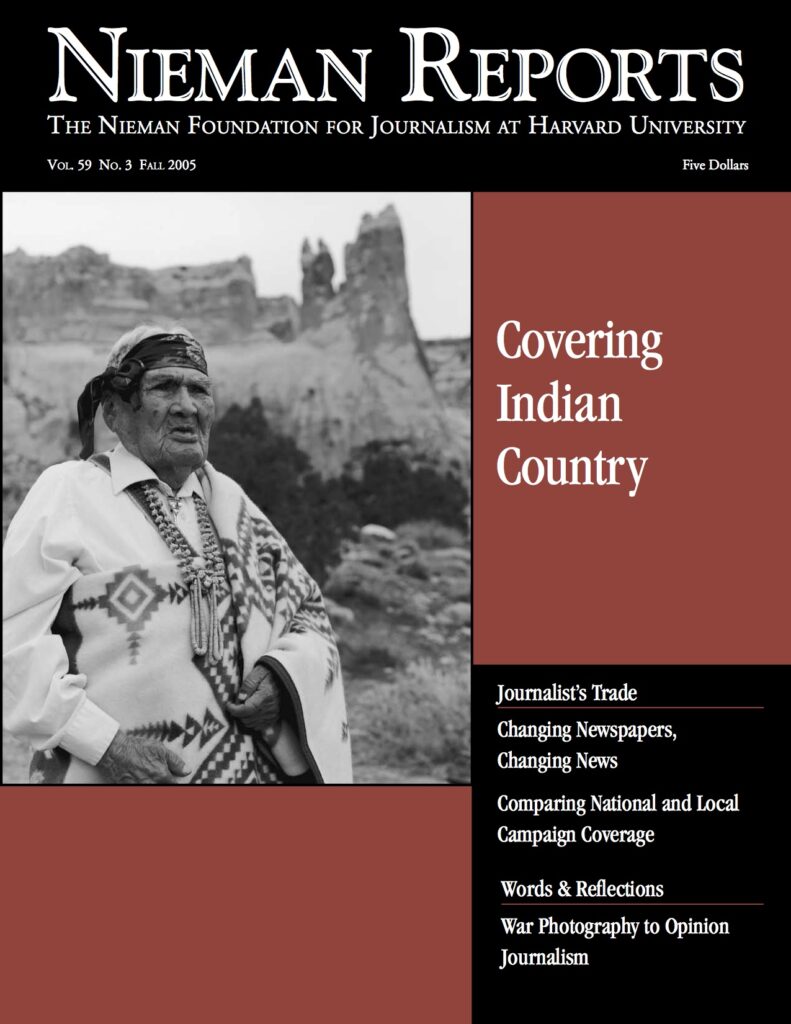In writing about their comparative examination of national and local campaign coverage, Shanto Iyengar, the Chandler Professor of Communication at Stanford University, and colleagues William F. Woo, former editor of the St. Louis Post-Dispatch who teaches in the graduate journalism program, and doctoral student Jennifer McGrady examine both the content and quality of the news reporting they studied, interpret what they learned in their analysis, and explain the significance of their findings on future political coverage. “… there were significant differences between what the journalists thought (or said) they produced and what was actually published,” they conclude. “Strikingly, reporters and editors significantly overestimated the substantive content of their stories.” A close look at the coverage also revealed a “discrepancy between what journalists assert is important and what news actually reaches readers.”
Fall 2005: Comparing National and Local Campaign Coverage Introduction
As a young reporter at The Rapid City Journal, Tim Giago was seldom allowed to cover stories on the nearby Pine Ridge Indian Reservation where he was raised. As one editor told him, being Native American meant he could not be objective in his reporting. In 1981 he moved back to the reservation to start a community newspaper called the Lakota Times. At that time it was the only independently owned weekly Indian publication in the United States. In this collection of stories, Native Americans and non-natives who tell stories about the lives of Indian peoples talk about their obligation to fairness and the skills they need to live up to this responsibility.
Covering Indian Country
As a young reporter at The Rapid City Journal, Tim Giago was seldom allowed to cover stories on the nearby Pine Ridge Indian Reservation where he was raised. As one editor told him, being Native American meant he could not be objective in his reporting. In 1981 he moved back to the reservation to start a community newspaper called the Lakota Times. At that time it was the only independently owned weekly Indian publication in the United States. In this collection of stories, Native Americans and non-natives who tell stories about the lives of Indian peoples talk about their obligation to fairness and the skills they need to live up to this responsibility.



